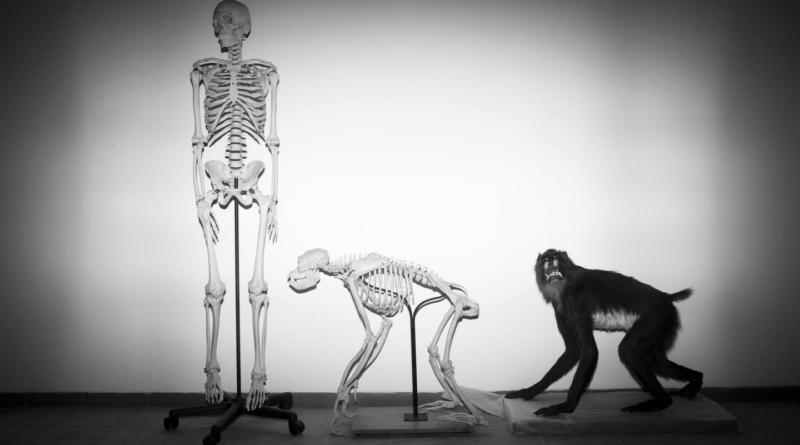Our ancient animal ancestors had tails. Why don't we? – KRMG
Why Humans Lack Tails FILE – Skeletons of a human and a monkey await installation at the Steinhardt Museum of Natural History in Tel Aviv, Israel on Monday, Feb 19, 2018. Humans’ ancient ancestors had tails, as most vertebrates still do. But somewhere around 20 or 25 million years ago, when apes diverged from monkeys, our branch of the tree of life shed its back appendage. In a paper published in the journal Nature on Wednesday, Feb. 28, 2024, researchers identify at least one of the key genetic tweaks that led to this change. (AP Photo/Oded Balilty, File) (Oded Balilty/AP)
WASHINGTON — (AP) — Our very ancient animal ancestors had tails. Why don’t we?
Somewhere around 20 million or 25 million years ago, when apes diverged from monkeys, our branch of the tree of life shed its tail. From Darwin’s time, scientists have wondered why — and how — this happened.
Now, researchers have identified at least one of the key genetic tweaks that led to this change.
“We found a single mutation in a very important gene,” said Bo Xia, a geneticist at the Broad Institute and co-author of a study published Wednesday in the journal Nature.
The researchers compared the genomes of six species of apes, including humans, and 15 species of monkeys with tails to pinpoint key differences between the groups. Once they identified a significant mutation, they tested their theory by using the gene-editing tool CRISPR to tweak the same spot in mouse embryos. Those mice were born without tails.
Xia cautioned that other genetic changes may also play a role in losing tails.
Another mystery: Did having no tails actually help these ape ancestors — and eventually, humans — survive? Or was it just a chance mutation in a population that thrived for other reasons?
“It could be random chance, but it could have brought a big evolutionary advantage,” said Miriam Konkel, an evolutionary geneticist at Clemson University, who was not involved in the study.
As to why having no tails may have helped, there are many tantalizing theories — including some that link being tailless to humans eventually learning to walk upright.
Rick Potts, who directs the Smithsonian Institution’s Human Origins Project and was not involved in the research, suggests being tailless may have been a first step toward some apes adopting a vertical body posture, even before they left the trees.
Not all apes live on the ground today. Orangutans and gibbons are tailless apes that still live in trees. But Potts notes that they move very differently than monkeys, who scamper along the tops of branches, using their tails for balance. Those apes hang below branches, swinging between them while hanging largely upright.
New York University biologist Itai Yanai, a co-author of the study, said that losing our tails was clearly a major transition. But the only way to certainly know the reason “would be to invent a time machine,” he said.
___
The Associated Press Health and Science Department receives support from the Howard Hughes Medical Institute’s Science and Educational Media Group. The AP is solely responsible for all content.
Copyright 2024 The Associated Press. All rights reserved. This material may not be published, broadcast, rewritten or redistributed without permission.
Your browser does not support HTML5 audio.
news
weather
traffic
Join in Tulsa’s largest single-day recycling effort on March 2nd.
Nominate someone in need to receive a free eye exam and glasses.
Sign up below to be added to our mailing list for the latest news updates, access to exclusive contests, and more!
Everything you love about krmg.com and more! Tap on any of the buttons below to download our app.
Enable our Skill today to listen live at home on your Alexa Devices!
© Cox Media Group. All Rights Reserved. By using this website, you accept the terms of our Visitor Agreement and Privacy Policy, and understand your options regarding Ad Choices. Learn about careers at Cox Media Group.
You may be offline. Please check your connection and try again using the Retry button.



 This year in odd news: The weirdest headlines from the Houston area in 2022 – KPRC Click2Houston
This year in odd news: The weirdest headlines from the Houston area in 2022 – KPRC Click2Houston 
